#Physalia physalis
Text

Portugese man-o-war tentacles
#fav#pink#tentacles#blue#purple#physalia physalis#Portuguese man o war#marine biology#marine creatures#marine life#sea life#sea animals#sea creatures#exotic sea creatures#animals#poisonous#poisonous animals
5K notes
·
View notes
Text
#marine biology#marine biology shitpost#eddie in the ocean#tumblr polls#portugese man of war#physalia physalis#edit i should have made the adult squid one like. human
191 notes
·
View notes
Text
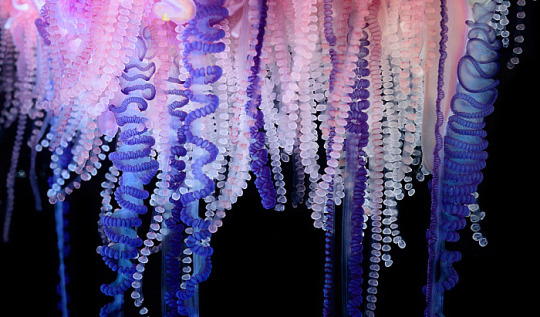
Portuguese Man-of-War (Physalia physalis), Sargasso Sea, Bermuda
Photo by Solvin Zankl
#Physalia physalis#physalia#portuguese man-o-war#man-o-war#hydrozoans#bluebottle#tentacles#cnidaria#ocean#sea#marine#marine animals#sea creatures#blue#pink#pink and blue#blue and pink#nature#animals#wildlife#siphonophore
176 notes
·
View notes
Text

Portuguese men o'war (Physalia physalis)
The Portuguese man o' war is comprised of a colony of zooids that work together an one unit.
(Image credit: Getty Images)
17 notes
·
View notes
Text
I am making portuguese man o war earrings!!!!
I’ve never made earrings in my life (or used clay, tbh) and am just using my sister’s kit for them. Hopefully they work alright… will update

Let’s bake the clay and then we will see
Look at those little physalia physalises <3
If they work out, I might put some beads or sequins on the tentacles (I’m kinda worried the tentacles might burn but I can’t think of any other way cus they’ll be impossible to attach afterwards… only one way to find out)
#she made some christmas decorations which were sooooo good#mine is of a lower quality shall we say but i love them anyway#siphonophore#physalia physalis#portuguese man o war
15 notes
·
View notes
Text


what if we were portugese man of war
This is all gonna be an autism fuelled rant abt the portugese man o war
These things are so cool. You ever heard of a colonial organism? These things are made up of zooids of BOTH polyps and medusae!! (Example, medusae make up jellyfish entirely and polyps make up anemone entirely) They're a fucking colony baby!!!
They're labeled as left handed or right handed based on which way their sail chambers curve, which completely changes the direction the wind takes them!! They're free floating, so the wind direction means a whole lot of difference. Like, yk how these things are infamous for being beached in mass amounts, stinging everyone on the sand? Well those masses likely all have the same handedness! All the men o war whos sail chambers that curved the other way in their bloom were taken a completely different direction!!
forgive me if i explained something wrong I'm not an expert I'm just autistic
#jellyfish#theyre not actually jellyfish but i need the jelly fans to see#portugese man of war#man o war#marine life#marine biology#marine life sketch#doodle dump#physalia physalis#physalis#infodump#siphonophore
9 notes
·
View notes
Text
life is short draw jellyfish yaoi on ur math hw

#🍵 mito's doodles°。 ⋆⸜#jellyfish#man o war#portugese man of war#lions mane#lions mane jellyfish#physalia physalis#cynea capillata
4 notes
·
View notes
Text
and what if they were best friends
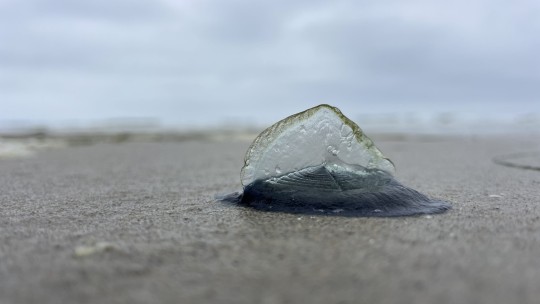
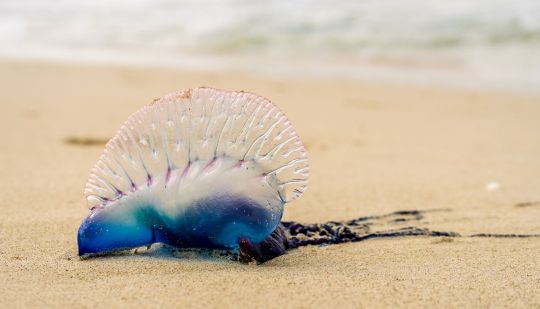
what then?
3 notes
·
View notes
Text

#inktober2023_25day_Dangerous
3 notes
·
View notes
Photo

A Portuguese man o’war (Physalia physalis) on Capelinhos beach, Faial island, Azores
by ChilliPepper0713
#portuguese man o war#man o war#Physalia physalis#physalia#Physaliidae#siphonophorae#hydrozoa#Petalonamae#wildlife: azores#wildlife: portugal
16 notes
·
View notes
Note


#YES#THE BEST FLAVOUR OF KOOLAID EVER#ask#tomnookishot#jellyfish#physalia physalis#Ty fluther this has got to be the best edit I've seen from you
3 notes
·
View notes
Text
hey guys is your pneumatophore right-handed or left-handed
3 notes
·
View notes
Text
🪼 jellyfish of the week: Physalia physalis

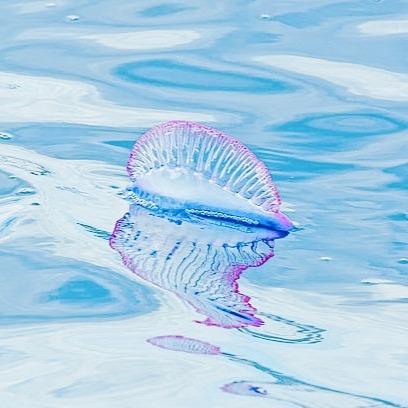
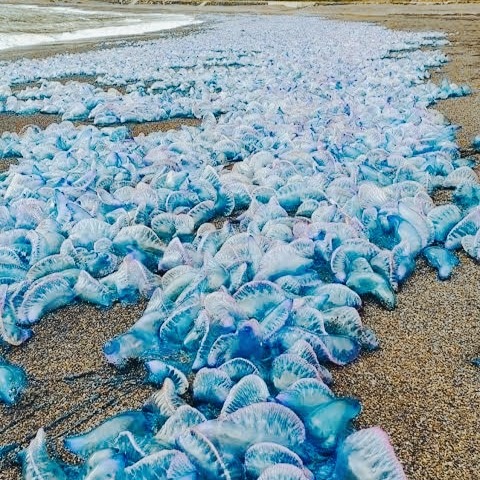
aka. portuguese man o' war, man-of-war, bluebottle, pacific man o' war. a marine hydrozoan found in the Atlantic and Indian Ocean.
#jellyfish of the week#jellyfish#jellyfishes#physalia physalis#physalia#portuguese man o war#man of war#bluebottle#pacific man o war
0 notes
Text
Animal of the Day!
Portuguese Man-of-War (Physalia physalis)

(Photo from Getty)
Conservation Status- Unlisted
Habitat- Eastern Atlantic Ocean; Indian Ocean
Size (Weight/Length)- 10 cm; 30 m tentacles
Diet- Small fish; Plankton; Shrimp
Cool Facts- Contrary to popular belief, the Portuguese Man-of-War is not a jellyfish. Instead, they are siphonophores. They are a colonial organism made up of tiny and uniquely functioning hydrozoans sort of like cells. Man-of-Wars float along the surface of the water, ensnaring food and using the wind to travel. Very few animals eat the Man-of-War, but their largest threat is the loggerhead turtle that has skin too thick for the Man-of-War’s venom to penetrate. The venom can injure humans and trigger an allergic reaction, however you’re more at the threat of drowning due to panic. Up to 10,000 people are stung every year but only a handful of the encounters end up being fatal.
Rating- 12/10 (Might want to carry vinegar with you when you’re swimming in Australia.)
#animal of the day#animals#marine creatures#siphonophore#jellyfish#but not really#tuesday#september 12#portuguese man-of-war#portuguese man o war#man o war#biology#science#conservation#the more you know
387 notes
·
View notes
Text
The Portuguese man-of-war
Time again for a sea monster and as we usually only have the mythical sea monsters here, I'm showing you a real sea monster today. You can find these creatures in the Pacific, but also off the Canary Islands and Portugal. They are also common in the Caribbean, for example off the coast of Cuba.

A Portuguese man-of-war
The Portuguese man-of-war (Physalia physalis) or swimming terror is often referred to as a jellyfish, but is actually a type of cnidarian also known as a siphonophore and is only very closely related to jellyfish.
They have a balloon-like float, which can be blue, purple or pink and protrude up to ten centimetres above the waterline. And because this resembled a warship under full sail in the 15th century, these animals were called Portuguese man-of-war. But here's the nasty bit: underneath the swimmer lurk long strands of tentacles and polyps, which can grow up to 10 metres long on average and extend up to 30 metres. The tentacles contain stinging nematocysts, microscopic capsules with coiled, barbed tubes that release venom that paralyses and kills small fish and crustaceans. After that the feeding polyps (gastrozooids) attach themselves to the victim's body, spread out on it and digest it.
The sting of the man o' war is rarely fatal for a healthy non-allergic person, but it is very painful and causes burns on unprotected skin. Incidentally, even torn tentacles are still poisonous for a certain time, so be careful there too. If you have come into contact with it, carefully remove the tentacle under salt water and do not touch it unprotected, as it can continue to nettle. Hot water above 45 °C denatures the proteins of the venom. Treat with zinc gluconate.
125 notes
·
View notes
